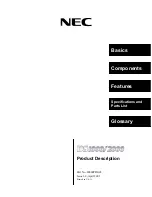
17
the additions to your telephone. Note that importing is additive. It does not replace your
existing phonebook even if entries have the same name. A line that starts with the #
character is ignored as a comment line. The space and tab characters can appear
anywhere except within a nickname or URL.
• You can also export the phonebook to your PC as a text file. This text file contains any
number of phonebook entries, each on a separate line made up of a nickname and SIP
URL.
Whenever entries are added to the phonebook, either through the web interface or by
importing a phonebook from your PC, there is the possibility that one or more entries will
have the same nickname. The telephone resolves this collision by appending a number
to nicknames as needed to make them unique. For example, if the telephone phonebook
already contained an entry with the nickname, pancho_h, and the user imported a
phonebook from a PC that contained an entry with the same name, the second entry
would be named pancho_h2 in the telephone’s phonebook.
Password Configuration
This is the web page where you change the password that grants you access to the
telephone’s Configuration Web Site. To change the password, specify the current
password and the new password you would like to use. Enter the new password a
second time to help prevent establishing a password with an unknown typographical
error. Once you enter the current password and the new password twice, click the
button to commit your changes. Your changes only take effect when you commit
your changes. If you forget your password, you can restore the factory default
through the configuration menu on the telephone (see the Navigation Map).
The password-configuration page looks like this:
Change Password
Current Password
[
]
New Password
[
]
Confirm Password
[
]
[ Commit ]
Configuring Your Telephone (cont.)
















































